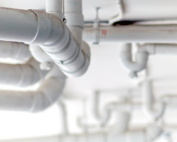Dripping Faucet? Here Are Some Ways to Fix Your Dripping Faucet At Home
You might think a dripping faucet is a minor issue; after all, what is a few drops of water? Well, those few drops in a day accumulate over several days and cause you to lose hundreds of gallons of water over time! That too is a conservative estimate if we only consider minor water leaks! Much larger episodes of water leakage can cause more damage. Below we will discuss some methods to work around a dripping faucet! Stay tuned…
Temporarily shut off the water supply
First things first, you need to stop the water and see where the problem lies. It is best to just turn off the water supply for now. This is a crucial step before you attempt to start any repairs. Locate the shut-off valves below the sink and turn them in the clockwise direction to shut off the incoming water supply. In the absence of valves beneath the faucet, you can turn off the main water supply. You will know when you shut off the water supply if there’s no water after turning the faucet on.
Close/seal the drain
Since you are going to disassemble the faucet, it is best to seal the drain or close it. You do not want to lose items down the drain!
Disassembling
You will need various tools, some of which are required for specific types of faucets:
1. Screwdriver
2. Adjustable wrench
3. Channel-lock pliers
4. Extra faucet cartridge
5. Nylon scrub pad
6. Spray oil/ lubricant
7. White vinegar
For the run of the mill standard faucet, just use a flathead screwdriver to remove the caps on the handle, and use a wrench to remove the handles. In case of corrosion, use spray oil for lubrication. Gather the parts as you remove them, and keep in mind how to reinstall them. For a single-handle faucet, you first loosen the hex setscrew pull upwards. Here is a great YouTube video on how to disassemble a faucet.
After this, you should be able to see the cartridge or inner valves. In the case of compression faucets, you need to unscrew the brass valve stem so the cartridge faucets can be pulled out. Once your valve system has been disassembled, you can proceed to the next step…
Inspection
Inspect the valves or cartridges that you just removed. Check the O-rings, seals, or rubber washers for any sort of damage or corrosion. Most dripping faucets are caused because of wear and tear of these parts, resulting in flattened washers or grooves on the parts.
Replacement
Gather the damaged parts and take them to the local hardware store to find new replacements. You can opt to buy replacement seal kits in the case of cartridge faucets or just replace the faucet entirely. You may even buy a washer-less faucet if you don’t want to deal with a flattened washer in the future.
Reassembling
First, clean the parts that you took out by using a cloth. You can even use white vinegar to remove any mineral buildup. This should be followed by cleaning via a Nylon scrub pad and then rinsing. Now use the parts that you gathered to reassemble your faucet by simply reversing the process of disassembly.
Test water flow
Restart your water supply and slowly let the water run its course. Inspect the faucet to see if the dripping persists. Soon, you’ll be able to let the water run faster, and then you should have no issues! If you are still experiencing a faucet leak, give us a call today and we can guide you through your options! (949) 775-4682

Slab Leaks: A True Plumbing Emergency
Home building following World War II was aggressive, so many houses were built on cement foundations to reduce the time it took to build them and to keep costs at a minimum. They were
How To Extend The Life Of Plumbing Pipes
A plumbing system consists of a complicated series of pipes, fixtures, and appliances that provide the infrastructure to run a well-functioning home. In this article, we will focus solely on plumbing pipes and ways
3 Silent Signs You Have A Plumbing Problem
Some plumbing issues announce themselves with a fury such as a drain backing up with sewage or a burst pipe, while others remain silent and destructive. In this article, we will reveal 3 signs



